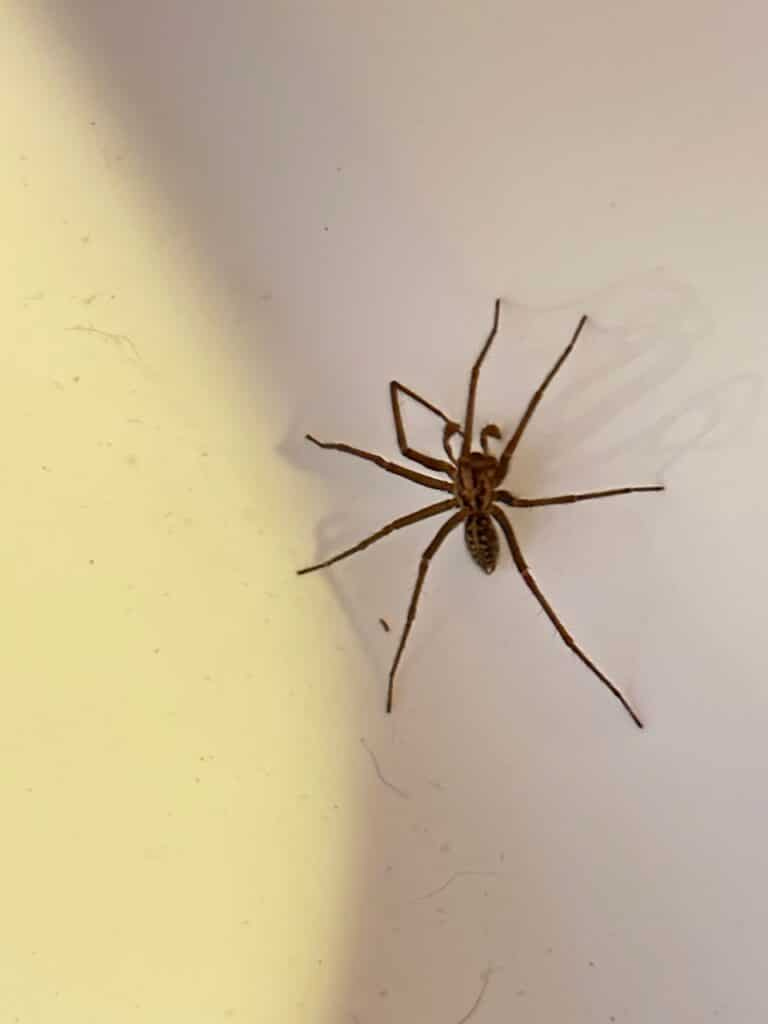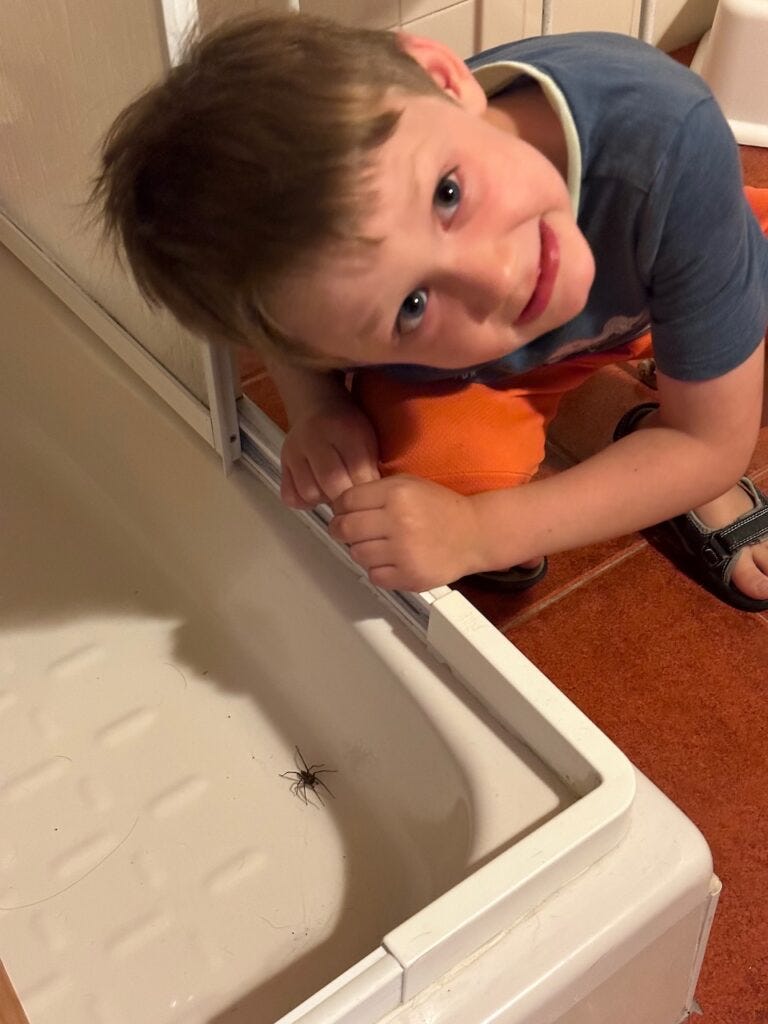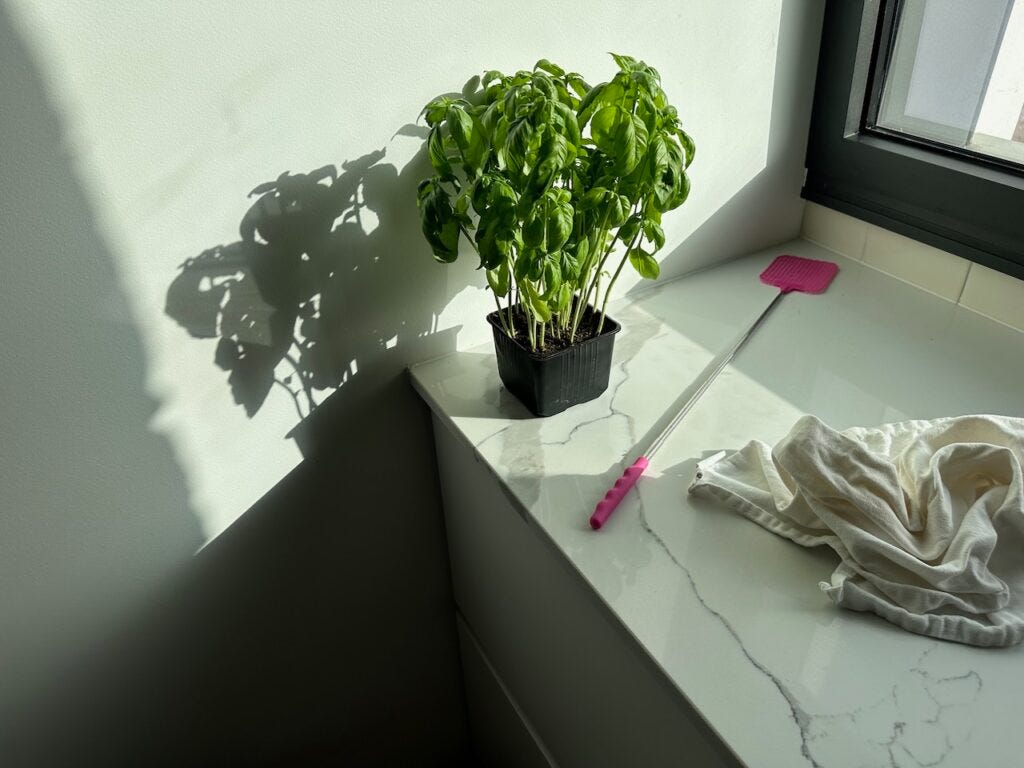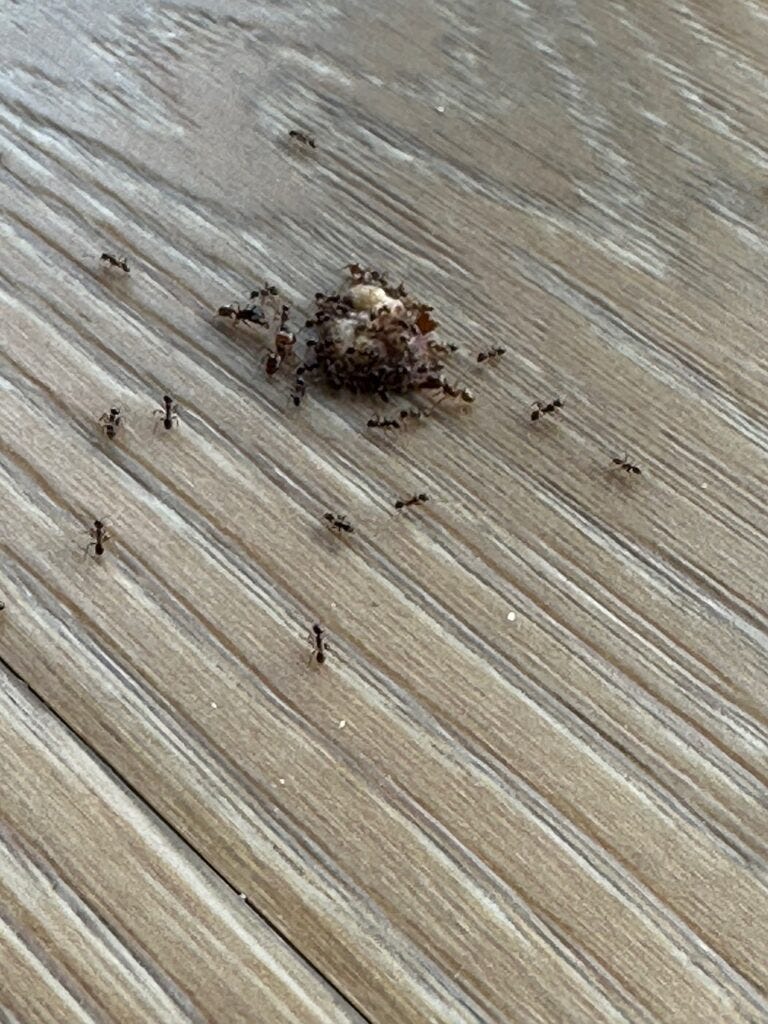Bugs
One thing that I didn’t anticipate having to get used to in Portugal was bugs. Bugs of all sorts: flies, moths, wasps, spiders, and yes, mosquitos. Not that there are any more of these things than in other parts of the world. On the contrary, I’ve found that the majority of bugs are kept in check by the regular breeze we enjoy as a benefit of being fairly close to the coast (we’re about 15 kilometers away, as the crow flies). However, we’ve discovered that screens to cover windows and doors are not really a thing here. Those wonderful breezes help to cool and ventilate our house, but the lack of screens is like an open-door policy for all of the bugs in the neighborhood.
Sure, we could batten down the hatches and turn on the A/C, but the temperatures have been far too pleasant to not take advantage of the natural cooling. Plus, we enjoy the indoor-outdoor lifestyle that is so prevalent in Portugal. As a matter of fact, we ate most of our meals on the patio of our AirBnB during our first month here, and once we buy outdoor furniture, I’m sure we’ll make good use of it on our own patio. Add to that the relatively high cost of electricity, and using air conditioning seems like a wasteful extravagance.
Thus, we’ve had to adjust to life with bugs. In our first week at the AirBnB, we discovered a giant spider hanging out in the shower of one of the bathrooms. Sonia actually hates spiders, and early on in our marriage, any time she spotted one she would call on me to kill it. After years of voicing subtle protests (I’d much rather have spiders than flies!), Sonia has relented somewhat. If a spider is huge, she may ask me to relocate it rather than kill it.
Admittedly, there are some spiders that even I don’t want around – particularly the ones that pose a threat to the kids: black widow and brown recluse among the primary offenders. But since I have no idea what kinds of spiders live in Portugal, let alone which ones pose a threat to humans, I took a bunch of photos of the giant spider in the shower and attempted to identify it. I often marvel at how quickly one can find very specific information on the internet, like “list of spiders found in portugal.” Within seconds I found a page dedicated to just that, complete with photos and tips for identification.
I found out that things aren’t much different here than in the US in terms of the spider population. Portugal is home to both the black widow (a mediterranean variety) and the brown recluse. However, there are only a couple large spiders in Portugal (excluding the tropical varieties on Madeira and in the Açores, where there are several). So I was able to identify the shower pan spider pretty quickly, and its common name is very apt: “Giant House Spider.”
Interestingly, the Giant House Spider is only found in Europe. The body of the males can reach an inch long, and their leg span up to three inches. Another fun fact: these spiders are the fastest spiders in the world, and have been clocked at up to 1.7 feet/second. Also, their webs are not sticky; once a fly becomes entangled in the funnel-like structure, the spider will run out and deliver a venomous bite, relying on its speed to subdue its prey.
Wikipedia confirmed, however, that the spider was not aggressive, preferring to hide unseen in dark corners of houses, and they rarely bit humans unless provoked. So it was strange to find it out in the open, hanging out in the shower pan where it was exposed and vulnerable. We decided to let it stay, figuring it was helping to control the fly population in the house. And we weren’t using that shower anyway, so it wouldn’t be bothering anyone. Plus, I didn’t want it to mistake any attempts at relocation as provocation…
But the next day, the spider was still there, and anytime I entered the bathroom, it would scamper around the shower pan. Astutely, Benji hypothesized that it might be stuck. It seemed unlikely to me that a spider would be unable to scale the relatively low sides of the plastic shower pan, but I devised a plan to test the hypothesis: I draped some toilet paper over the shower pan, creating a bridge that the spider could use to escape. I assumed if the spider really wanted to escape, it would be able to figure out the toilet paper bridge. If not, it would probably still be there the next day. Sure enough, Benji was right: the spider was gone the next morning, and we never saw it again.
Sadly, we weren’t so fortunate with some other types of bugs. Our AirBnB didn’t have any air conditioning, which wasn’t really a problem, as the nighttime temperature dropped to the low 60’s. That is a perfect temperature for sleeping, as far as I’m concerned, so we slept with the windows open. And because of the aforementioned lack of screens, the bugs found their way into our bedrooms during the night. Every morning we woke up with a new bite or two, usually from mosquitos. I hoped that eventually I would become immune to them, but apparently it takes thousands of bites over several months for someone’s immune system to stop responding to a mosquito’s saliva, and I didn't really want to volunteer myself as a mosquito pin cushion. Thankfully, Sonia found a plug-in mosquito repellant that was quite effective, and our nights soon became relatively bug-free.
Then there are the flies. Thankfully, the flies we’ve encountered in Portugal have been of a smaller variety than the houseflies I’m familiar with in the states (and MUCH smaller than the horseflies that used to terrorize me in Wyoming during my youth). Nonetheless, their diminutive stature does not detract from their annoyance. When we were at our AirBnB, the flies weren’t too much of a problem; we ate our meals outside, and the breeze was very helpful in keeping them away. However, they became a problem once we moved into our own house. As we don’t yet have an outdoor dining table, we’ve been having our meals inside – and the flys have been incessant.
It has become a mission for us to seek and destroy any flies that come inside the house. The kids take part too, as it’s not so different from the spotted lantern fly directive they received in New Jersey: kill on sight. The local solution seems to be bug zapper lights, which hang above the doors of many stores to catch flies right as they enter – but we aren’t about to do that at our house. And we certainly don’t want to hang tacky strips of fly paper around. As useful and effective as they might be, I don’t really want to live in their midst. So for now, the €1 pink telescoping fly swatter we purchased at a hardware store has become our best weapon in the arsenal.
The fruit flies are another matter. They seem to crop up at the slightest morsel of fruit left on a plate or the tiniest bit of wine left in a bottle. For the first week in our new house, Sonia was on a mission to combat the fruit flies. We even constructed a trap filled with vinegar and dish soap. Since then, we have become much more regimented when it comes to fruit preservation and cleaning, and we don't leave our wine glasses unattended without placing a napkin over them, or a bottle without a stopper; we don’t want to give fruit flies any reason to materialize. The same can be said for ants, which also seemed to appear out of nowhere within days of our arrival, chowing down on any morsels Nero left in his food bowl, or any crumb that fell from the table. Fortunately, after a couple of rounds of vacuuming (and diligent sweeping) they have yet to reappear.
And finally, we have the wasps. Sonia got stung by a wasp on her foot soon after moving into our new house, which wasn’t the nicest welcoming gift (perhaps it's auspicious in Portugal? Sure - we'll go with that). Over the past month they have occasionally wandered into the house, bumping off the ceiling and windows until they navigate their way out again. They’re also a common sight by our pool, taking sips of the cool water. I just hope they're not constructing a giant nest nearby after discovering the newly-filled pool. A few days ago I saw one of the largest wasps I’ve ever seen -- making itself at home in our bedroom. Some more pictures and a Google search confirmed that it was a hornet (which, as I learned, is actually just a larger type of wasp). It soon met its demise at the hand of the pink fly swatter, as it was sadly unable to find its way back outside on its own.
Of course I’ve lived with bugs of all sorts in every place I’ve lived in the US, and there have been some nasty ones. The worst were the cockroaches in southern California. I think I loathe cockroaches more than Sonia despises spiders. I’ve also had to deal with termites and silverfish and stinkbugs and Asian lady beetles (ladybug imposters), and countless other pests. So our experience in Portugal is really only different – or perhaps only feels different – because our lifestyle is different. We usually keep the doors and windows open all of the time (without any screens!) and relish the cooling effect of the Atlantic “westerlies” as the breezes traverse our house. Bugs are just a fact of life that come with our new screenless lifestyle. And In case you’re wondering, It would be impractical (if not impossible) to add screens to all of the doors and windows, so that never even crossed our minds as a viable option. Instead, we’ve come to embrace the new style of habitation and the tradeoff that comes with it.
And we’ll also embrace our friends, the spiders, who are like the generals in our war against flies. Speaking of which, we have at least one Giant House Spider of our own. I discovered him (or her – I haven’t been able to distinguish between the sexes yet) hiding behind the sink in one of our bathrooms. Because the kids have been listening to the Harry Potter audiobooks, I think I’ll call him Aragog. For now, he seems pretty happy in our bathroom, so I’m going to let him be. Incidentally, I haven’t spotted a single fly in that bathroom.











